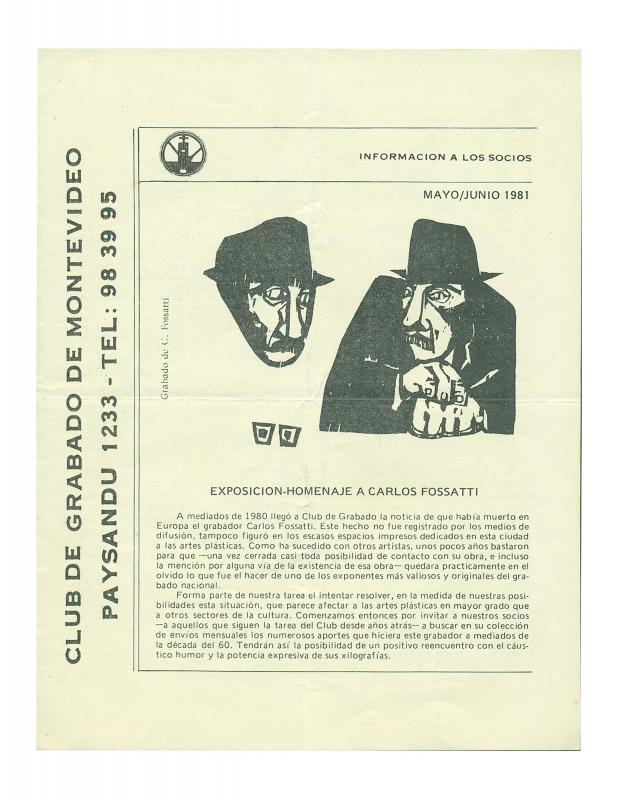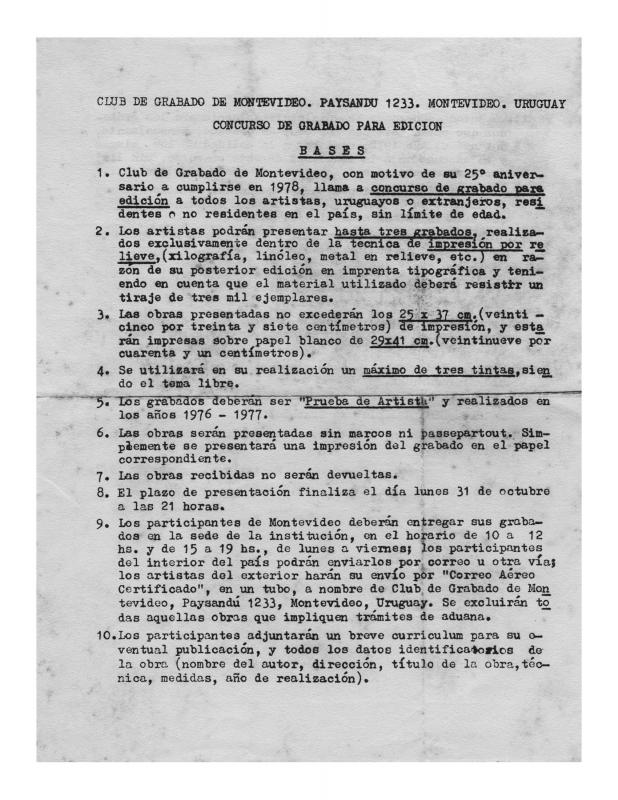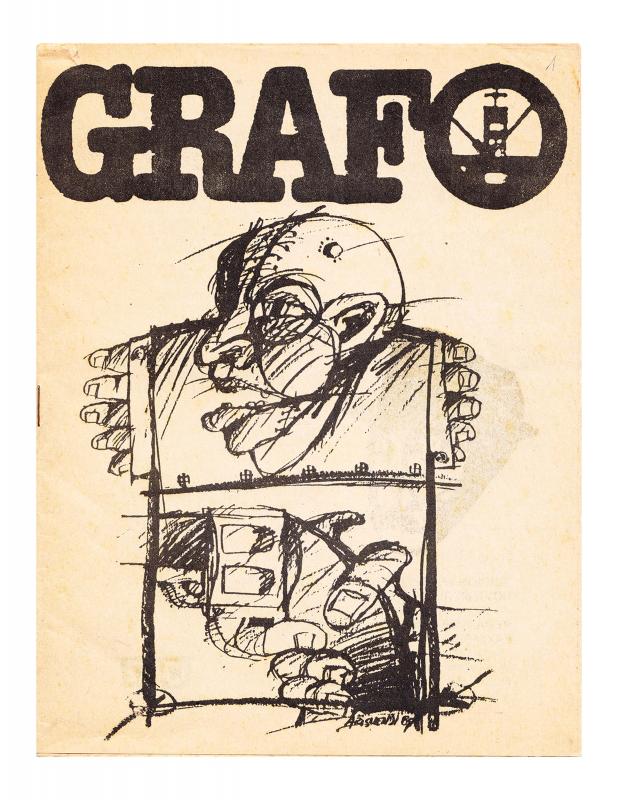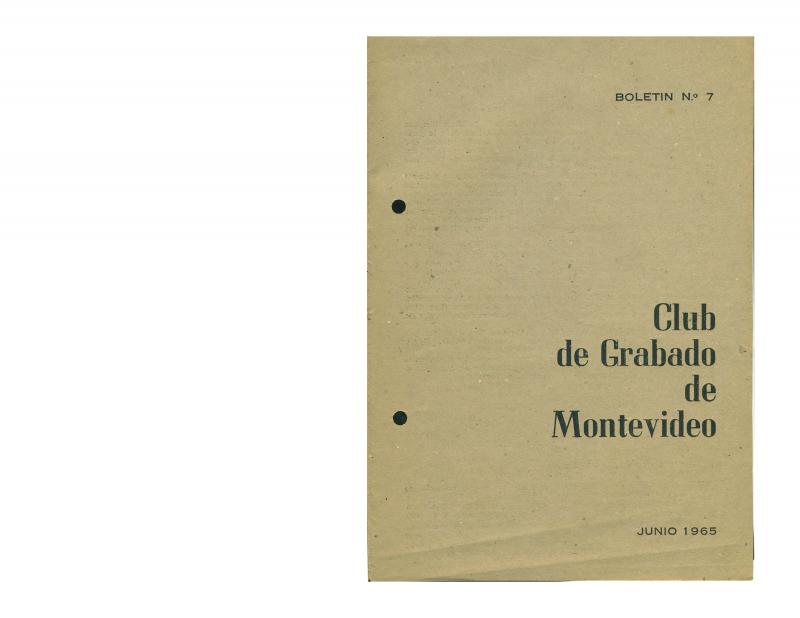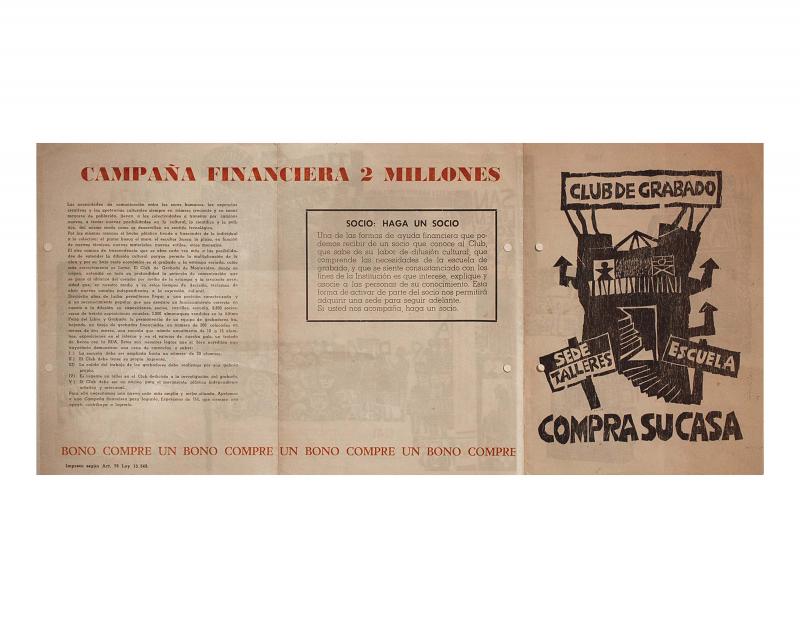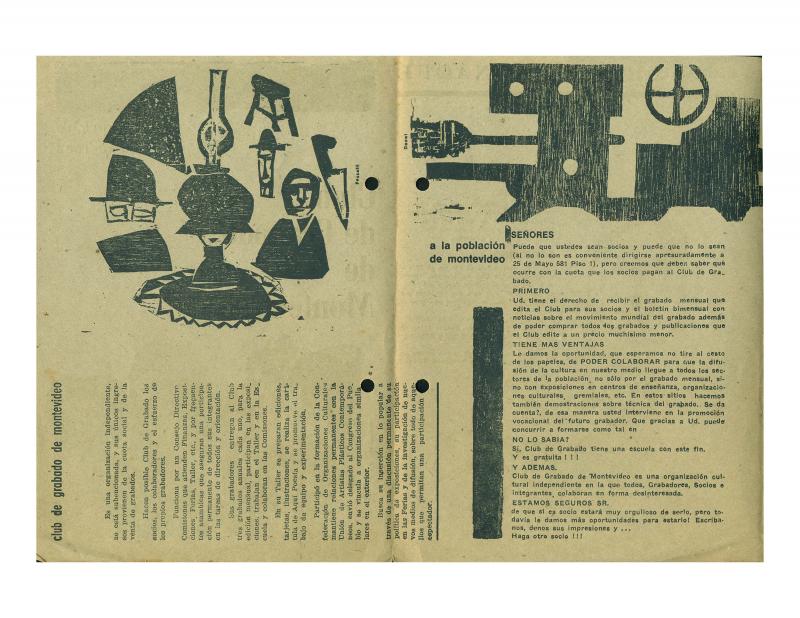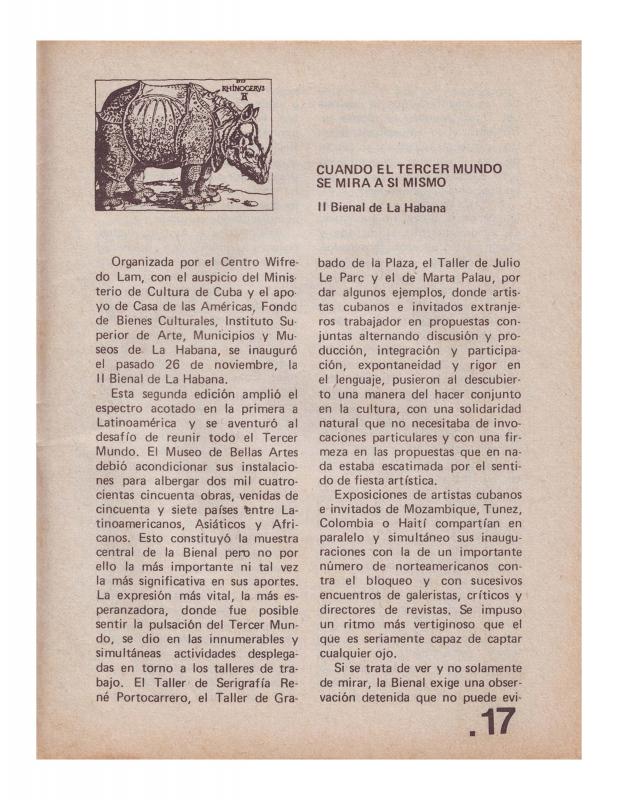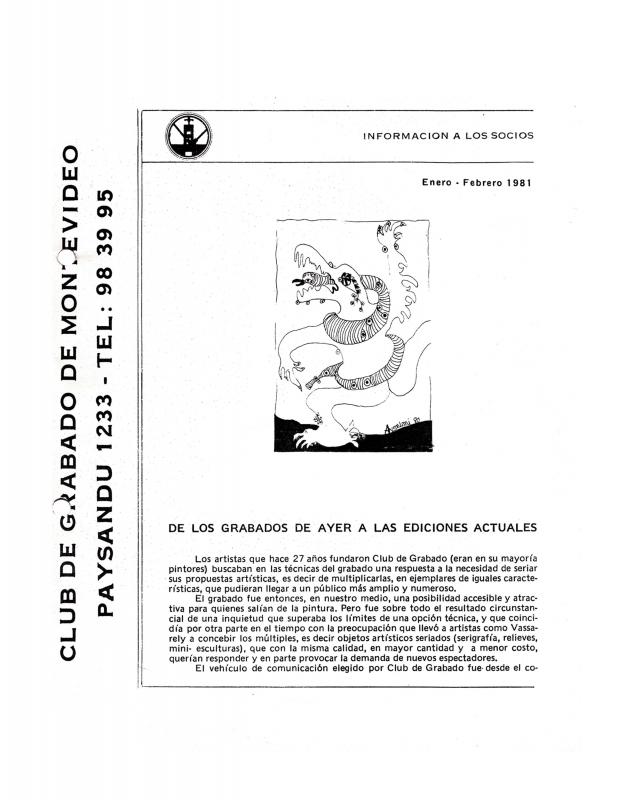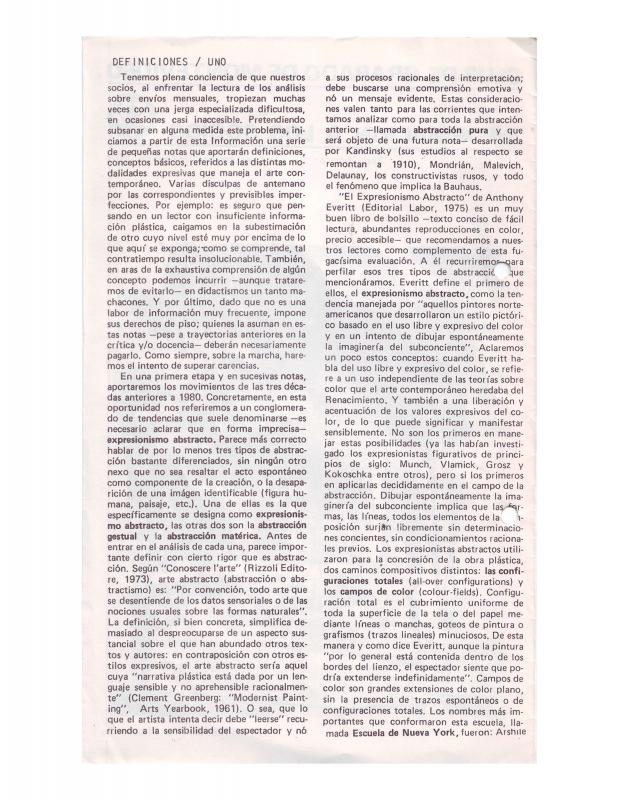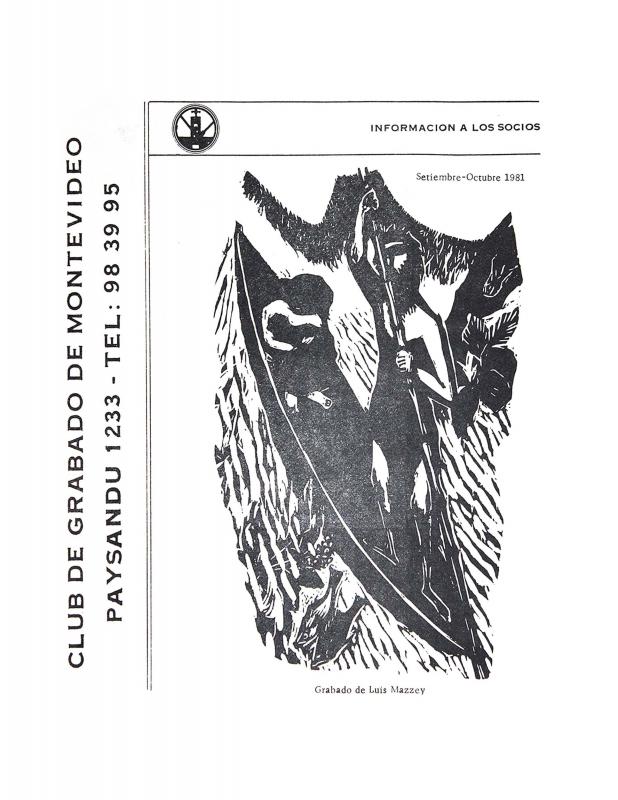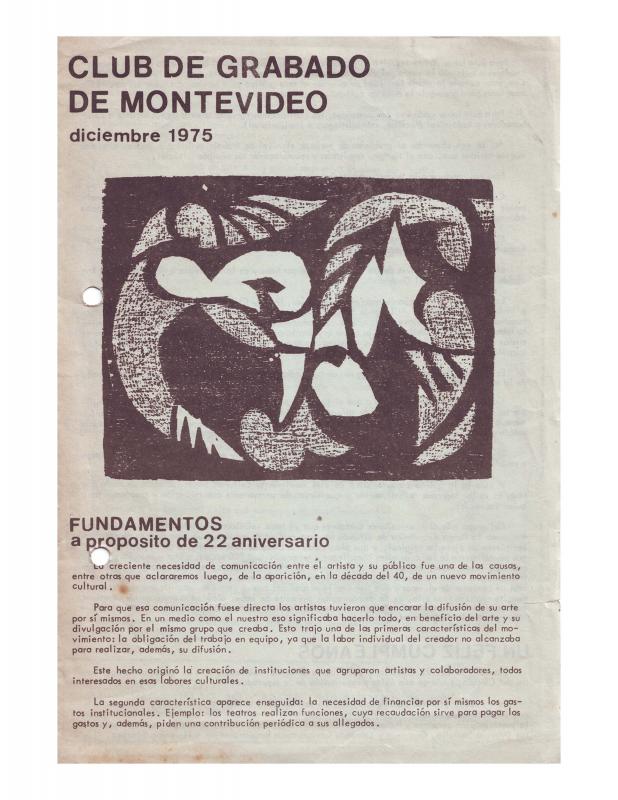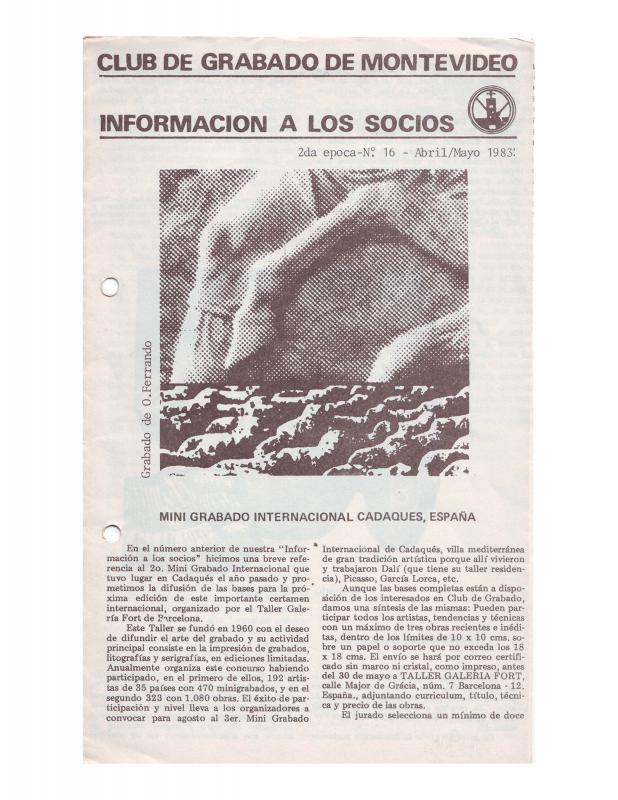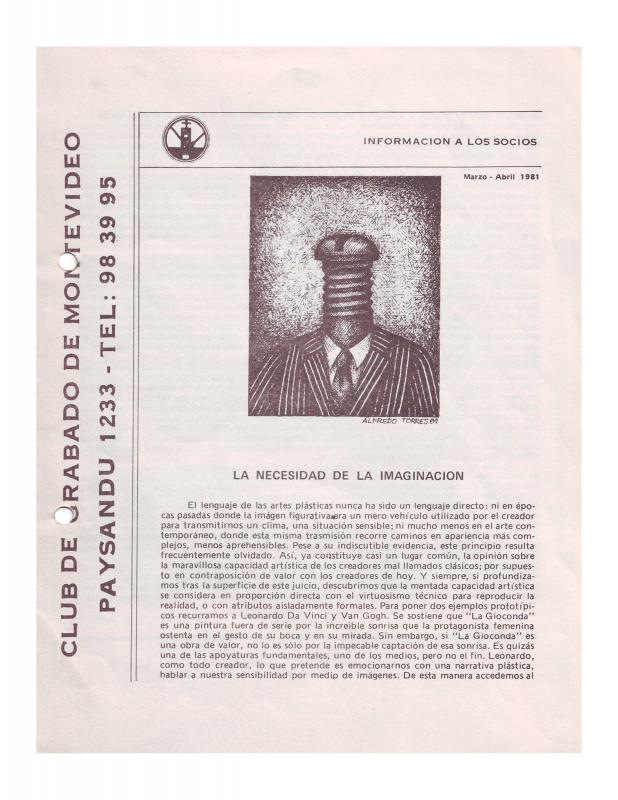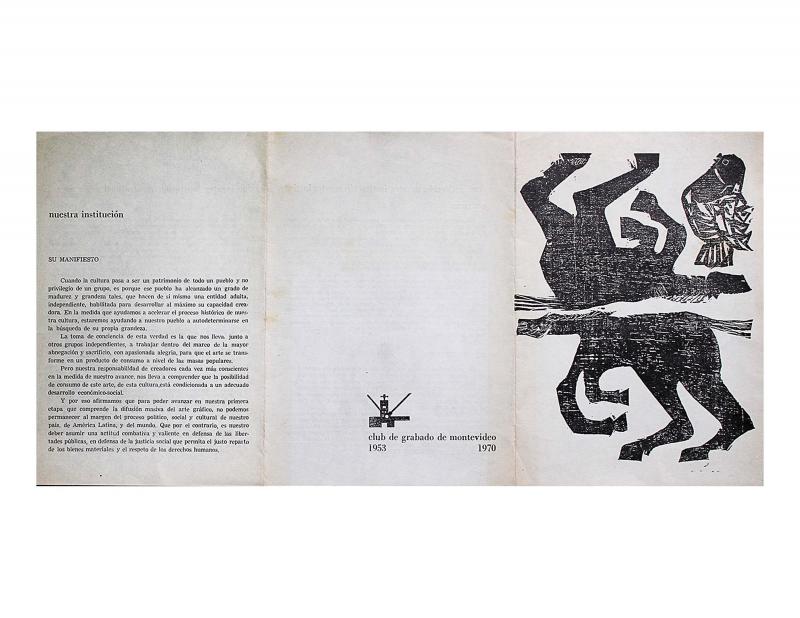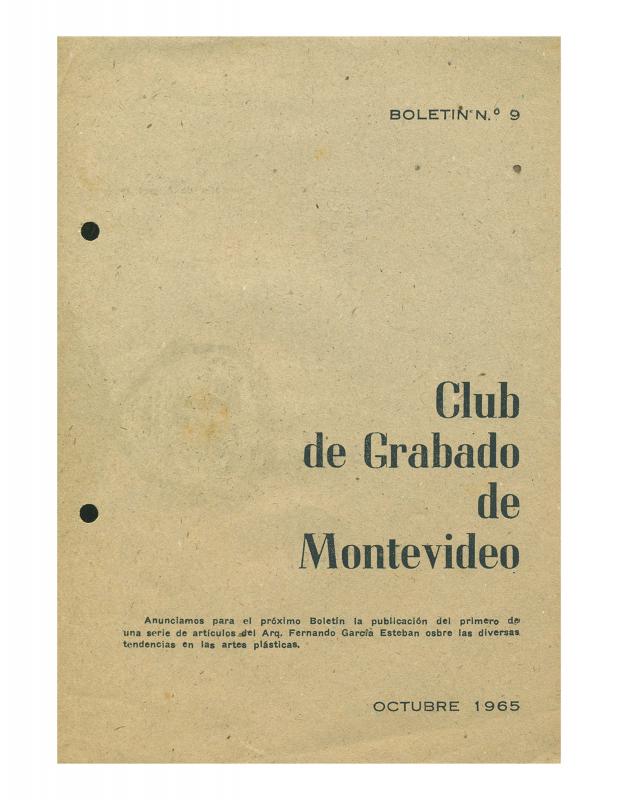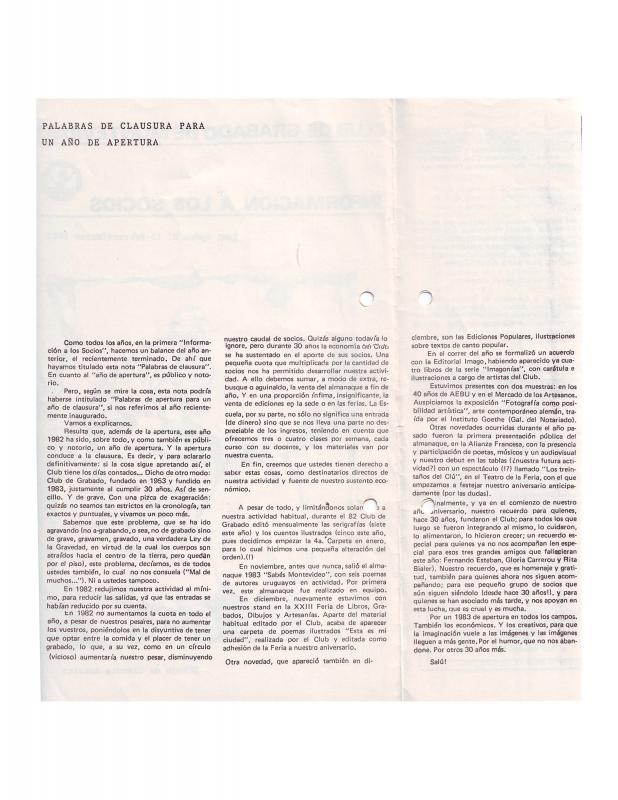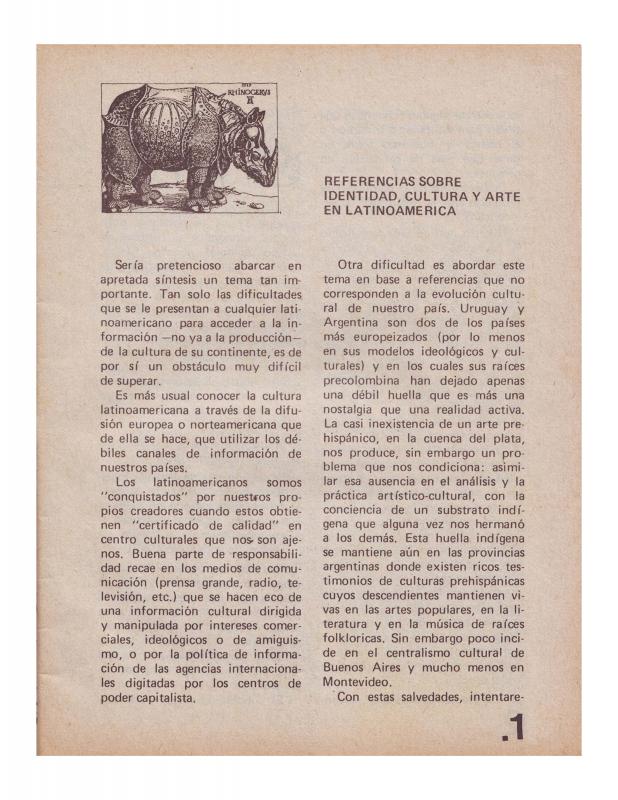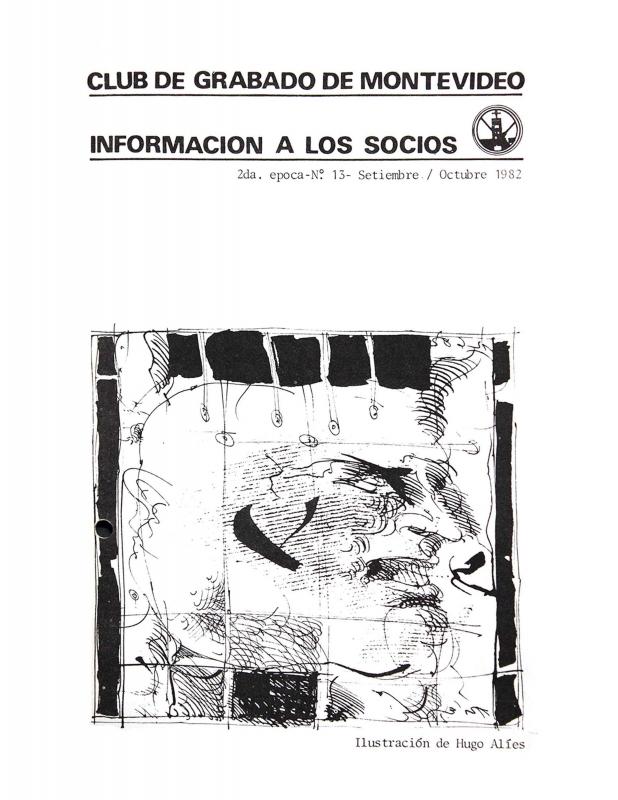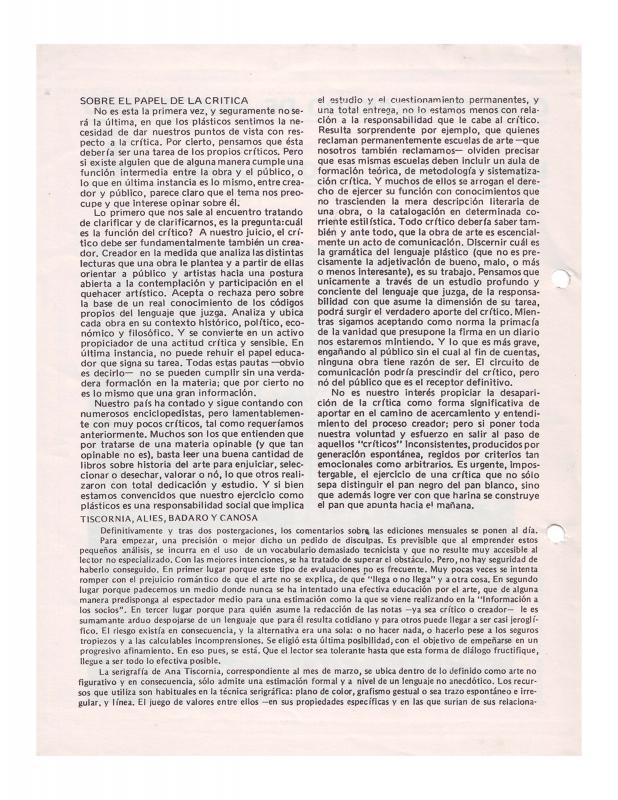This is the second part of a conversation with Óscar Ferrando (b. 1943) [see the first part of the interview in the ICAA digital archive entitled “Entrevista a Óscar Ferrando” (doc. no. 1186747)]. While Ferrando was in the United States he visited museums and looked at the state of art education in general, but he also spent time visiting printmaking workshops and schools, evaluating their institutional organization, teaching systems, experimental techniques, and distribution strategies. Based on his observations, he compared what he saw in the US with the CGM (Club de Grabado de Montevideo). Ferrando describes the CGM as an unusual case. He sees that many American print shops are more commercial, and notes that in the United States prints enjoy the same prestige as sculpture and painting. He acknowledges certain influences among Latin American art associations, such as the Club de Grabado’s calendar printing project that was inspired to some extent by the Centro de Arte Puertorriqueño’s Carlos Raquel Rivera, Lorenzo Homar, and other important printmakers. Ferrando discusses the financial results, noting that in Puerto Rico the sale of calendars provided funds for a study trip to the Unites States, “whereas [in Montevideo] the proceeds were barely enough to do some repairs on the roof.” It should be noted that almost every one of the CGM’s publications includes a report on the Club’s endemic financial straits. Ferrando also mentions printmaking groups in New York, such as the school directed by Richard Blackburn (1920–2003), whose members include Latin American printmakers such as Puerto Rican Carlos Sueños (b. 1952), and artist communities such as the Contemporary Art Workshop in Chicago where, in addition to their group activities, participating artists have a studio of their own. [As complementary reading, see in the archive the following articles published by the Club de Grabado de Montevideo: “Concurso de grabado para edición” (doc. no. 863481); “13 años de actividad de Club de Grabado de Montevideo” (doc. no. 1183571); “El arte correo en el Uruguay” (doc. no. 1191850); “Boletín N° 7 Club de Grabado de Montevideo” (doc. no. 1182833); “Club de Grabado compra su casa” (doc. no. 1192649); “Club de Grabado de Montevideo 22 Aniversario 1953 - Agosto 1975” (doc. no. 1183514); “Club de Grabado de Montevideo a la población de Montevideo” (doc. no. 1183124); “Cuando el Tercer Mundo se mira a sí mismo. II Bienal de La Habana” (doc. no. 1184459); “De los grabados de ayer a las ediciones actuales” (doc. no. 1191787); “Definiciones / Uno” (doc. no. 1189065); “Entrevista a Luis Mazzey” (doc. no. 1186991); “Fundamentos a propósito de su 22 aniversario” (doc. no. 1182640); “Mini Grabado Internacional de Cadaqués. España” (doc. no. 1191135); “La necesidad de la imaginación” (doc. no. 1190793); “Nuestra institución” (doc. no. 1182010); “Los nuevos movimientos de las artes” (doc. no. 1182868); “Opiniones (I)” (doc. no. 1185411); “Palabras de clausura para un año de apertura” (doc. no. 1191167); “Referencias sobre identidad, cultura y arte en Latinoamérica” (doc. no. 1183641); “Reflexiones en torno a la supuesta crisis de las artes plásticas” (doc. no. 1185539); and “Sobre el papel de la crítica” (doc. no. 1187071)].

